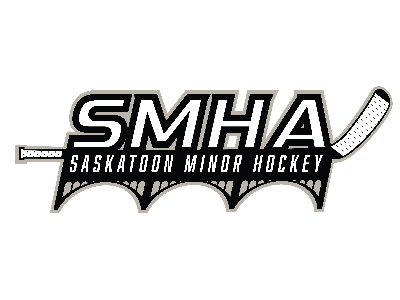Please click here for a handy checklist of hockey equipment that is required.
Please click here to find out the order to put on your child's hockey equipment
PARENTS - Please ensure that your son or daughter's equipment fits them properly and that the equipment is maintained:
Parents have a responsibility to ensure that players are wearing equipment that fits properly, protects the area that it is intended to protect and is well maintained. Hockey Canada recommends that parents and players use care when selecting protective equipment. Here are some important points to remember:
• If any piece of equipment is cracked or is structurally unsound, it should be replaced immediately or properly repaired by a professional. Equipment should be inspected often so that all breaks can be recognized immediately and properly attended to.
• All equipment should be hung to dry after every game or practice. This reduces deterioration in the equipment’s structure and quality. Skate blades and holders should be completely dried immediately after every game or practice. This will prevent deterioration of the blade. Proper maintenance involves examining all equipment frequently throughout its life span.
• Equipment should cover the entire area of the body that it is meant to cover. Equipment should never be bought to grow into, this leaves the player at risk of serious injury, as equipment that is too big will slide away from the area that it is protecting.
• Used equipment can be an effective way to reduce the costs involved with buying new equipment for the growing player. When buying used equipment ensure that it fits properly and has good protective quality meaning there are no cracks or tears.
Did you know?
• That you should never buy skates that are too big to grow into as this can affect skating development?
• When drying your skates after a session the insoles should be taken out for more effective drying?
• Your helmet and facemask must be CSA certified?
• If you paint your helmet or remove the CSA sticker your helmet is no longer CSA certified?
• You should not apply stickers to the helmet as some stickers have glue that can harm the helmet and could affect both CSA certification and the manufacturers warranty?
• There are specific facial protectors for the player depending on their age, and you should ask your sports store or refer to the Hockey Canada rulebook to determine which is best suited for your son or daughter?
• If you remove ear protection from a CSA certified helmet it is no longer CSA certified and therefore does not meet Hockey Canada requirements?
• Your throat protector must be BNQ certified and cannot be altered in any way? This is a mandatory piece of equipment for all age groups and for all positions in minor hockey - including goalies.
• As a rule of thumb your hockey stick should reach between your chin and your mouth if you are in street shoes?
• In a "ready stance" with the stick's blade flat on the ice, there should be no gap between the ice and the bottom edge of the blade? If so, try a different lie to remove this gap.
For more detailed information on equipment visit www.hockeycanada.ca and download the Hockey Canada Equipment Fitting Guide found on the Safety Program web page under downloads.
